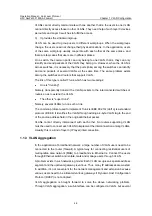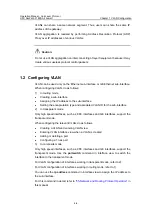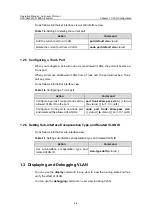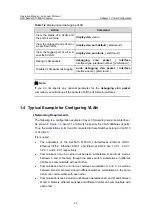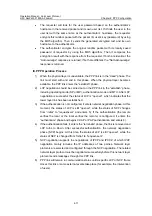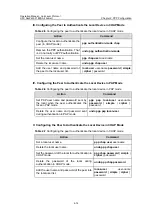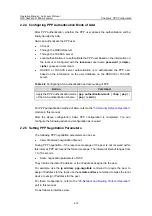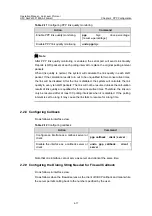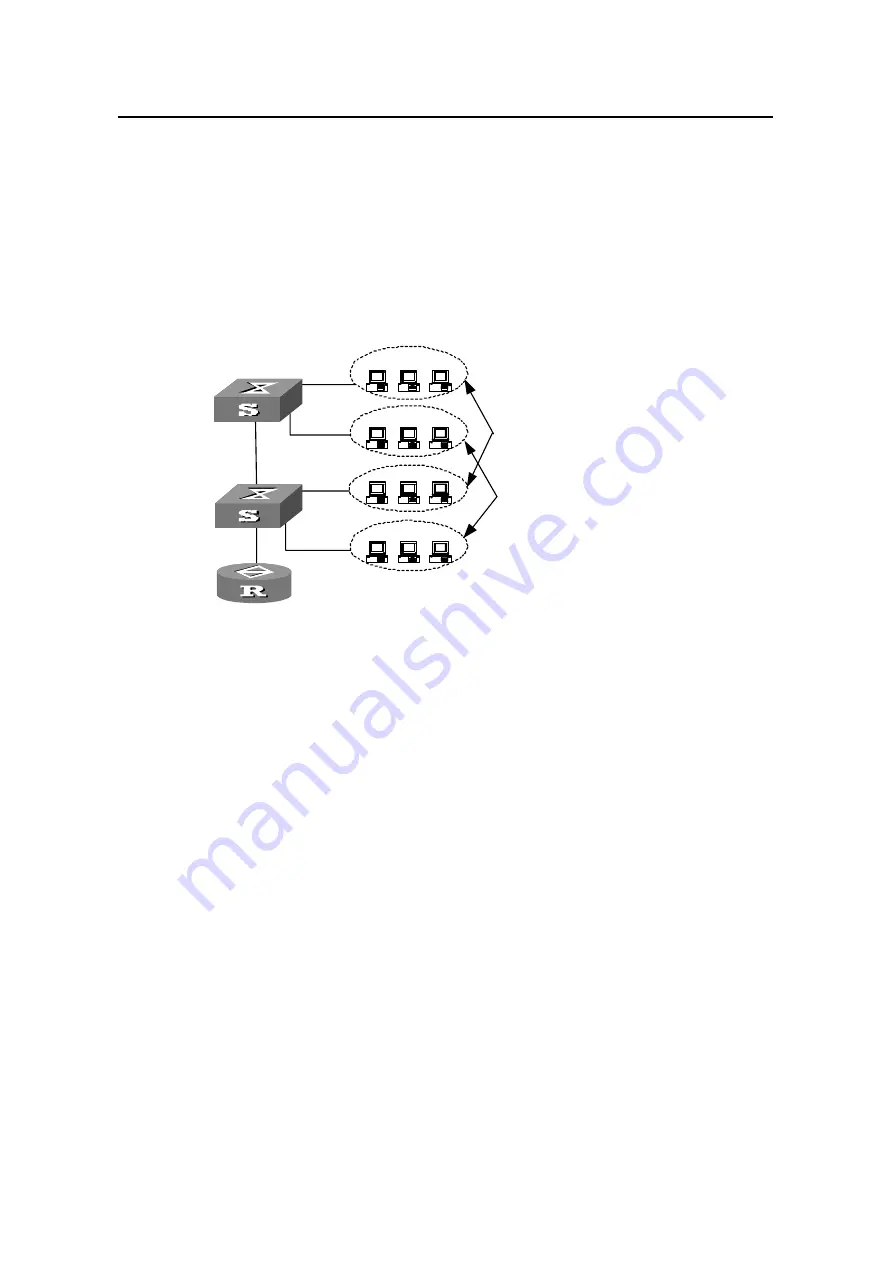
Operation Manual - Link Layer Protocol
H3C SecPath F1800-A Firewall
Chapter 1 VLAN Configuration
4-2
1.1.2 Why Using VLAN
The LAN interconnection by means of switches cannot restrict the broadcast. The
technology of Virtual Local Area Network (VLAN) comes into being to solve the
problem.
In this way, one LAN is divided into several logical "LAN"s (VLANs), with
each VLAN as a broadcast domain. In each VLAN, the hosts can communicate with
each other just as they are in a LAN, but the VLANs cannot interact with one another
directly. Therefore, the broadcast packets are restricted in one VLAN, as shown in
.
VLAN A
VLAN B
VLAN A
VLAN B
VLAN A
VLAN B
LAN Switch
LAN Switch
Router
Figure 1-1
An example of VLAN
The buildup of VLAN is not restricted by physical locations, that is to say, one VLAN
can be within in one switch or across switches, or even across routers.
The VLAN can be classified:
z
Based on the port
z
Based on the MAC address
z
Based on the protocol type
z
Based on IP address mapping
z
Based on multicast
z
Based on the policy
At present, the VLAN is usually classified based on the port. In this manual, the
VLANs are all classified based on the port except special declaration.
The advantages of using VLAN are listed as follows:
1)
It can restrict broadcast packets (broadcast storm), save the bandwidth and thus
improve the performance of the network.
The Broadcast domain is restricted in one VLAN and the switch would not directly
send frames from one VLAN to another except that it is a layer 3 switch.
2)
It can enhance the security of LAN.





